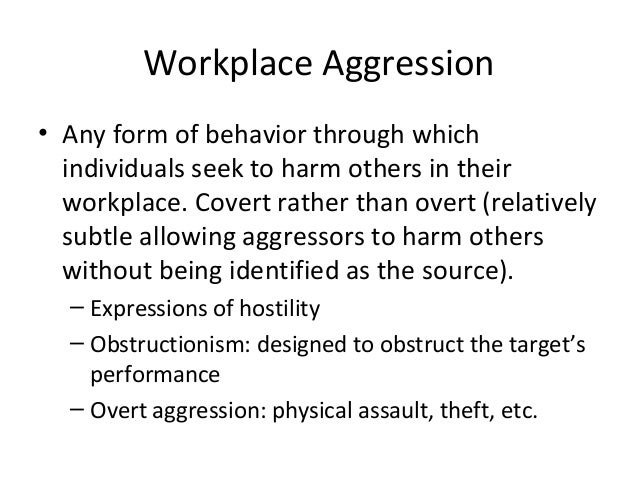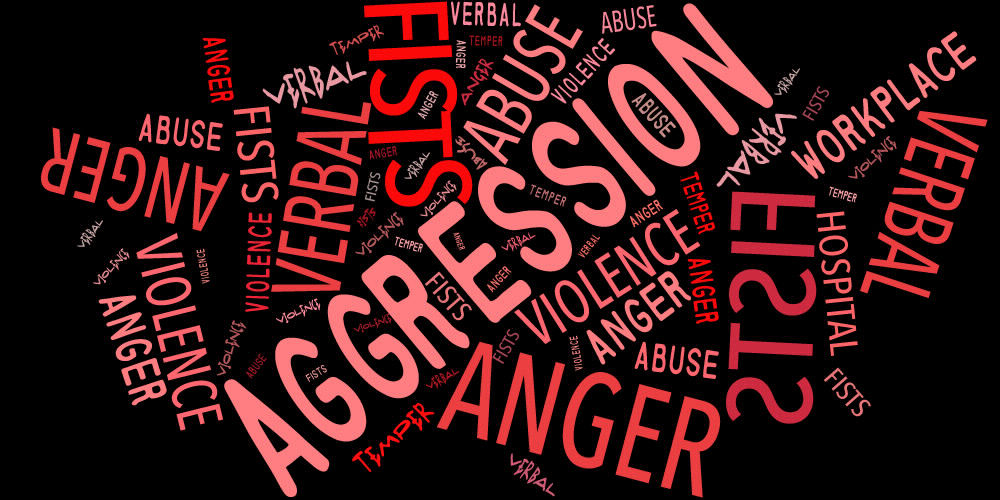Understanding Workplace Aggression: An In-depth Analysis
Workplace aggression is a pervasive issue that affects organizations and employees worldwide. Dealing with aggression in the workplace can take many forms, including physical, verbal, and psychological aggression. Physical aggression involves the use of force or violence, while verbal aggression includes hostile communication, such as yelling, insults, and threats. Psychological aggression, on the other hand, involves behaviors that undermine an individual’s sense of self-worth, such as intimidation, humiliation, and sabotage.
The impact of workplace aggression on employees and organizations can be significant. Victims of workplace aggression may experience decreased job satisfaction, increased absenteeism, and mental health issues, such as anxiety and depression. Organizations, on the other hand, may face decreased productivity, increased turnover, and legal liability.
Therefore, it is crucial for organizations to take a proactive approach to dealing with aggression in the workplace. By recognizing the signs of workplace aggression and implementing effective intervention strategies, organizations can create a positive work environment that promotes respect, inclusivity, and open communication.

Recognizing the Signs of Workplace Aggression
Dealing with aggression in the workplace is a complex issue that requires early detection and intervention to prevent escalation. Workplace aggression can take many forms, including physical, verbal, and psychological aggression. Recognizing the warning signs of workplace aggression is crucial in preventing harm to employees and organizations.
Hostile communication is one of the most common signs of workplace aggression. This can include yelling, insults, and threats, which can create a toxic work environment that undermines productivity and morale. Intimidation is another warning sign of workplace aggression, which can involve subtle behaviors, such as staring, glaring, or making threatening gestures. Retaliation is also a common form of workplace aggression, which can occur when an employee seeks revenge against a coworker or supervisor who they perceive has wronged them.
Early detection and intervention are essential in preventing workplace aggression from escalating. Organizations should establish clear policies and procedures for reporting and addressing workplace aggression. Employees should be encouraged to speak up if they witness or experience workplace aggression, and supervisors should be trained to recognize the signs of workplace aggression and take appropriate action.
Creating a positive work environment is also crucial in preventing workplace aggression. Organizations should promote open communication, encourage respect and inclusivity, and implement conflict resolution training. Leadership should set the tone for the organization’s culture and promote a positive work environment that values diversity, equity, and inclusion.
In conclusion, dealing with aggression in the workplace requires a proactive approach that includes early detection, intervention, and prevention. By recognizing the warning signs of workplace aggression and creating a positive work environment, organizations can promote a culture of respect, inclusivity, and open communication.

Creating a Positive Work Environment: Strategies for Preventing Workplace Aggression
Dealing with aggression in the workplace is a complex issue that requires a proactive approach to prevent and mitigate its negative effects. One crucial aspect of managing workplace aggression is creating a positive work environment that fosters respect, inclusivity, and open communication.
Promoting open communication is essential in preventing workplace aggression. Encouraging employees to express their thoughts, ideas, and concerns in a respectful and constructive manner can help prevent misunderstandings and conflicts that can lead to aggression. Leaders should set the tone for open communication by actively listening to their employees, seeking feedback, and addressing concerns promptly and effectively.
Encouraging respect and inclusivity is also critical in preventing workplace aggression. Leaders should establish clear expectations for respectful behavior and hold all employees accountable for their actions. Organizations should also promote diversity, equity, and inclusion by valuing and respecting the unique perspectives and experiences of all employees.
Implementing conflict resolution training is another effective strategy for preventing workplace aggression. Conflict is inevitable in any workplace, but it can be managed and resolved constructively with the right tools and skills. Providing training on conflict resolution, mediation, and negotiation can help employees manage conflicts effectively and prevent them from escalating into aggression.
Leadership plays a critical role in setting the tone for the organization’s culture and promoting a positive work environment. Leaders should lead by example by demonstrating respectful and inclusive behavior, promoting open communication, and addressing conflicts and aggression promptly and effectively.
In conclusion, creating a positive work environment is crucial in preventing workplace aggression. By promoting open communication, encouraging respect and inclusivity, and implementing conflict resolution training, organizations can foster a culture of respect, trust, and collaboration. Leaders should set the tone for the organization’s culture and promote a positive work environment that values diversity, equity, and inclusion.
Dealing with Aggression in the Workplace: Effective Intervention Strategies
Workplace aggression is a complex issue that requires effective intervention strategies to prevent and mitigate its negative effects. Dealing with aggression in the workplace involves a fair and consistent approach that prioritizes the safety and well-being of all employees.
Conducting investigations is a crucial step in addressing workplace aggression. Employers have a duty to provide a safe work environment, and investigations can help identify the root cause of the aggression and determine the appropriate course of action. Investigations should be conducted promptly, thoroughly, and impartially, with all parties involved having the opportunity to provide their perspective.
Implementing disciplinary actions is another essential intervention strategy for dealing with workplace aggression. Disciplinary actions should be proportionate to the severity of the aggression and consistent with the organization’s policies and procedures. Employers should communicate the disciplinary actions clearly and promptly to all parties involved, emphasizing the importance of a safe and respectful work environment.
Providing support services for victims of workplace aggression is also critical in dealing with aggression in the workplace. Victims may experience a range of emotions, including fear, anger, and anxiety, and may require support services such as counseling, therapy, or employee assistance programs. Employers should ensure that support services are confidential, impartial, and accessible to all employees.
Employers should also prioritize communication and transparency in dealing with workplace aggression. Clear and consistent communication can help prevent misunderstandings and ensure that all employees are aware of the organization’s policies and procedures for addressing aggression. Employers should also provide regular training and updates on workplace aggression, emphasizing the importance of a zero-tolerance policy and the consequences of non-compliance.
In conclusion, dealing with aggression in the workplace requires a fair and consistent approach that prioritizes the safety and well-being of all employees. Conducting investigations, implementing disciplinary actions, and providing support services for victims are essential intervention strategies for addressing workplace aggression. Employers should also prioritize communication and transparency, ensuring that all employees are aware of the organization’s policies and procedures for addressing aggression.

Building Resilience: Coping Strategies for Victims of Workplace Aggression
Workplace aggression can have a profound impact on employees, leading to mental health issues, decreased productivity, and increased absenteeism. Victims of workplace aggression may feel powerless, anxious, and uncertain about how to cope with the situation. However, building resilience can help victims manage the impact of workplace aggression and promote their overall well-being.
Seeking support from colleagues, supervisors, or employee assistance programs is an essential coping strategy for victims of workplace aggression. Talking to someone who understands the situation and can provide guidance and support can help victims feel less isolated and overwhelmed. Employers should ensure that support services are confidential, impartial, and accessible to all employees, and that supervisors are trained to recognize the signs of workplace aggression and provide appropriate support.
Self-care is also crucial in building resilience and coping with workplace aggression. Victims should prioritize their physical and emotional well-being by engaging in activities that promote relaxation, stress reduction, and self-reflection. This may include exercise, meditation, yoga, or therapy, among other practices. Employers can support self-care by promoting a positive work-life balance, encouraging employees to take breaks, and providing resources for stress management and mental health.
Resilience is the ability to bounce back from adversity and thrive in the face of challenges. Building resilience involves developing a growth mindset, focusing on strengths and positive attributes, and cultivating a sense of purpose and meaning. Victims of workplace aggression can build resilience by reframing negative experiences as opportunities for learning and growth, practicing gratitude and positive self-talk, and seeking out new challenges and experiences that align with their values and goals.
In conclusion, building resilience is a crucial coping strategy for victims of workplace aggression. Seeking support, practicing self-care, and cultivating a growth mindset can help victims manage the impact of workplace aggression and promote their overall well-being. Employers can support resilience by providing confidential and accessible support services, promoting a positive work-life balance, and creating a culture of respect, inclusivity, and accountability.

Creating a Culture of Accountability: Policies and Procedures for Addressing Workplace Aggression
Workplace aggression can have serious consequences for both employees and organizations, including decreased productivity, increased absenteeism, and mental health issues. To prevent and address workplace aggression, it is essential to establish clear policies and procedures that promote a culture of accountability and zero tolerance for aggressive behavior.
A zero-tolerance policy for workplace aggression should be communicated to all employees, and regular training should be provided to ensure that everyone understands the policy and its implications. The policy should define workplace aggression in clear terms, including physical, verbal, and psychological forms of aggression. It should also outline the consequences of violating the policy, including disciplinary actions and support services for victims.
Regular communication about the policy is essential to ensure that all employees are aware of it and understand its importance. This can be achieved through staff meetings, newsletters, and other communication channels. Employers should also ensure that the policy is easily accessible to all employees, for example, by posting it on the company’s intranet or employee handbook.
Investigations should be conducted promptly and impartially in cases of workplace aggression. Employers should ensure that the investigation process is fair, transparent, and confidential, and that all parties involved are treated with respect and dignity. Disciplinary actions should be consistent and proportionate to the severity of the offense, and should be communicated clearly to all parties involved.
Support services should be available to victims of workplace aggression, including counseling, therapy, and employee assistance programs. Employers should ensure that these services are confidential, impartial, and accessible to all employees, and that supervisors are trained to recognize the signs of workplace aggression and provide appropriate support.
In conclusion, creating a culture of accountability is essential in preventing and addressing workplace aggression. Clear policies and procedures, regular communication, prompt investigations, consistent disciplinary actions, and support services for victims can help promote a positive work environment and ensure the safety and well-being of all employees. Employers should prioritize the implementation and enforcement of a zero-tolerance policy for workplace aggression and ensure that all employees are aware of it and understand its importance.
The Role of Human Resources in Addressing Workplace Aggression
Dealing with aggression in the workplace is a critical issue that requires the involvement of various stakeholders, including Human Resources (HR) professionals. HR plays a crucial role in preventing and addressing workplace aggression by implementing policies and procedures, conducting investigations, and providing support services for victims.
One of the primary responsibilities of HR in addressing workplace aggression is to establish clear policies and procedures that promote a culture of zero tolerance for aggressive behavior. These policies should define workplace aggression in clear terms, including physical, verbal, and psychological forms of aggression. They should also outline the consequences of violating the policy, including disciplinary actions and support services for victims.
HR professionals should ensure that all employees are aware of the policy and understand its implications. This can be achieved through regular training and communication, such as staff meetings, newsletters, and other communication channels. Employers should also ensure that the policy is easily accessible to all employees, for example, by posting it on the company’s intranet or employee handbook.
In cases of workplace aggression, HR professionals should conduct prompt and impartial investigations. The investigation process should be fair, transparent, and confidential, and all parties involved should be treated with respect and dignity. HR should ensure that the investigation process is unbiased and that all relevant evidence is considered before making a decision.
Disciplinary actions should be consistent and proportionate to the severity of the offense. HR professionals should communicate the decision clearly to all parties involved and ensure that the consequences are enforced. Support services should be available to victims of workplace aggression, including counseling, therapy, and employee assistance programs. HR should ensure that these services are confidential, impartial, and accessible to all employees, and that supervisors are trained to recognize the signs of workplace aggression and provide appropriate support.
Confidentiality, impartiality, and fairness are essential in HR’s approach to workplace aggression. HR professionals should ensure that all parties involved are treated with respect and dignity, and that the investigation process is transparent and unbiased. HR should also ensure that the policy is enforced consistently and that all employees are aware of the consequences of violating the policy.
In conclusion, HR plays a crucial role in preventing and addressing workplace aggression. Clear policies and procedures, regular communication, prompt investigations, consistent disciplinary actions, and support services for victims can help promote a positive work environment and ensure the safety and well-being of all employees. HR professionals should prioritize the implementation and enforcement of a zero-tolerance policy for workplace aggression and ensure that all employees are aware of it and understand its importance.

